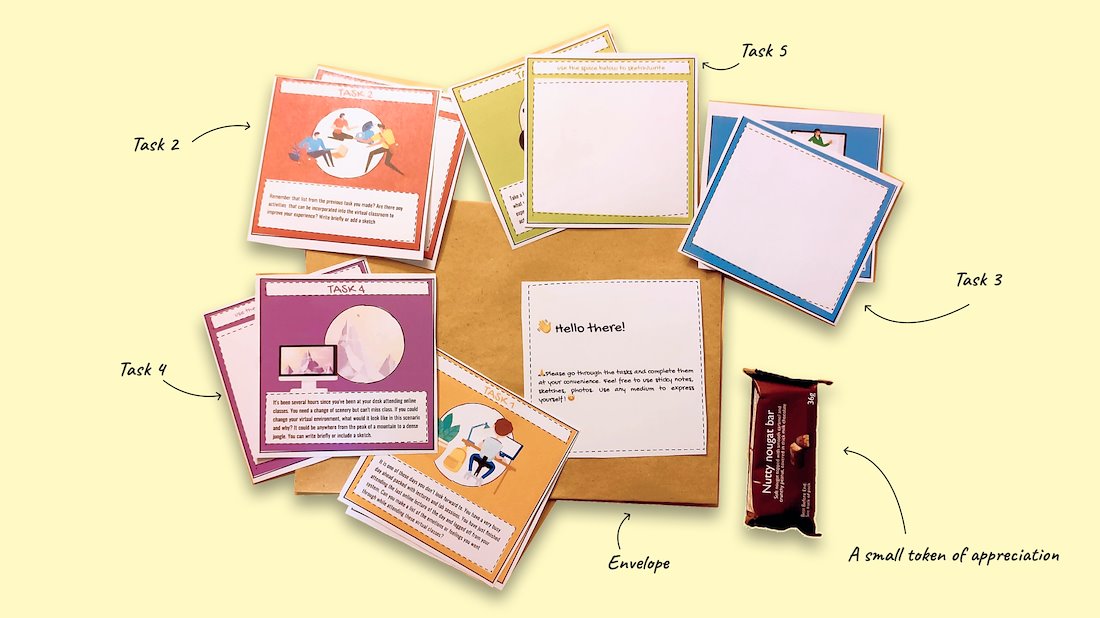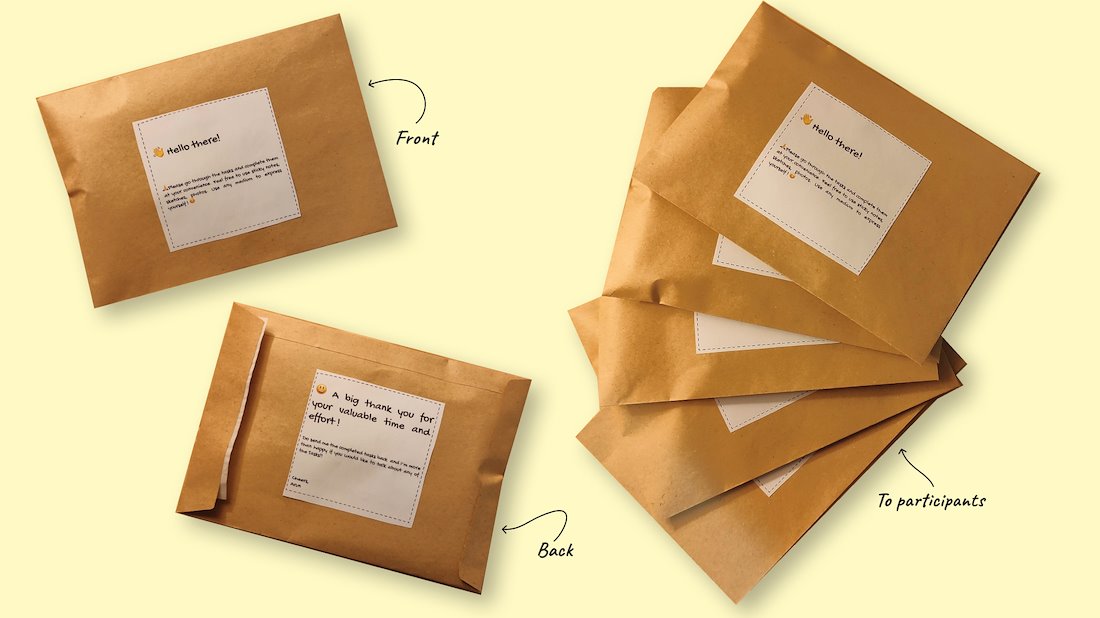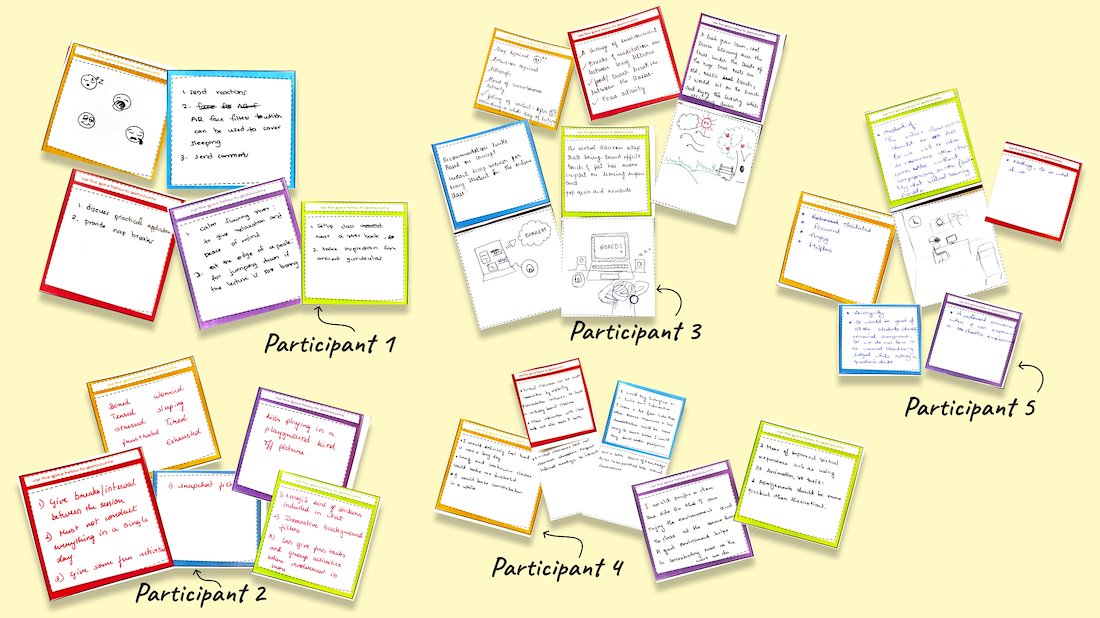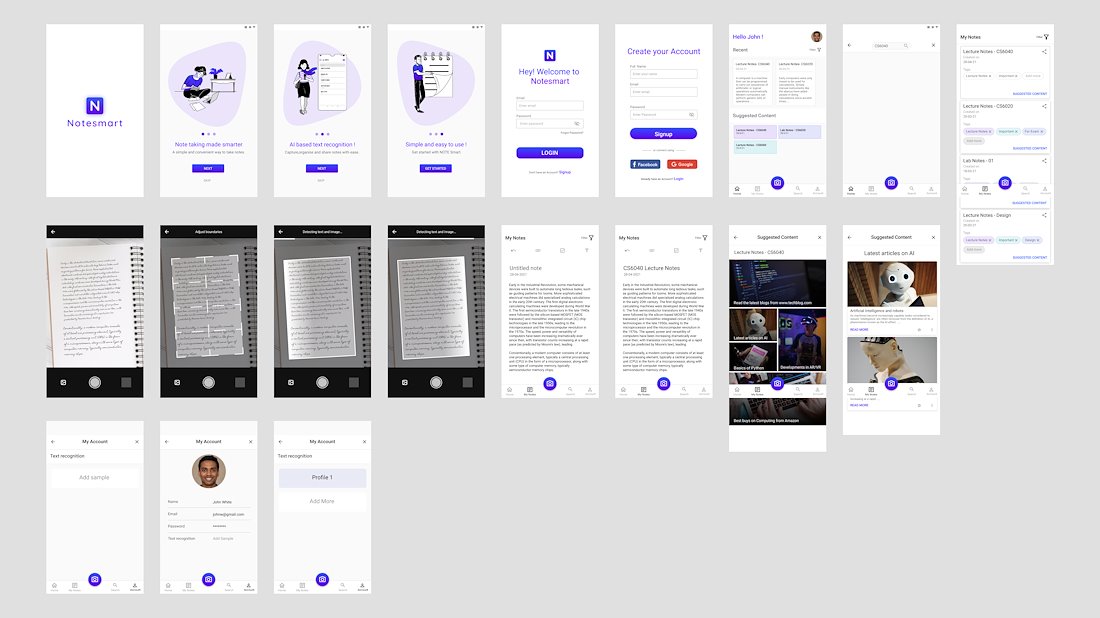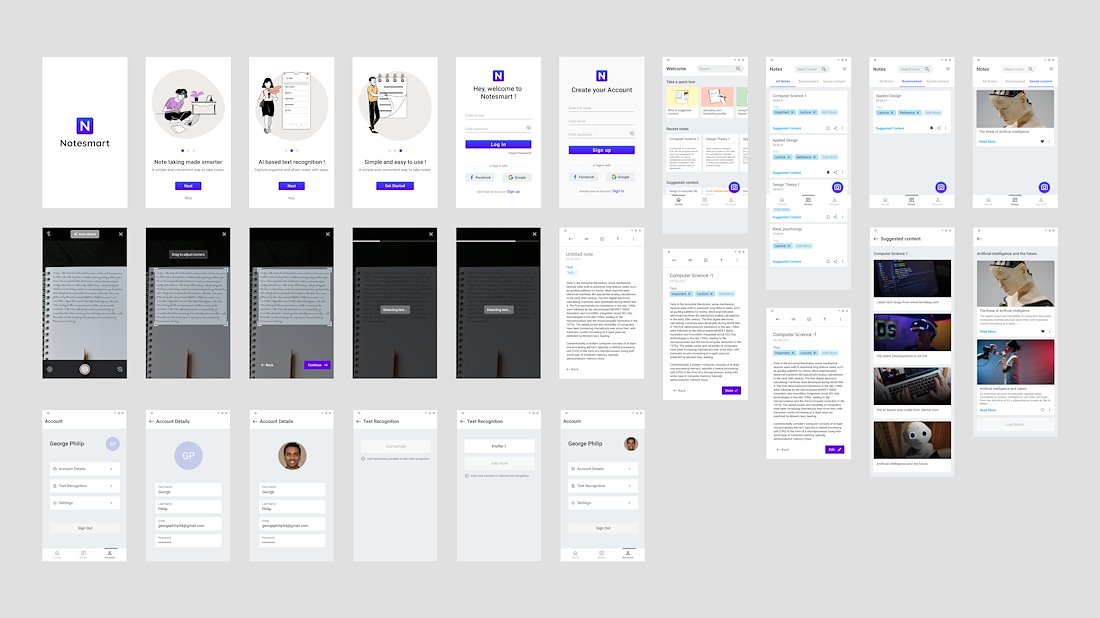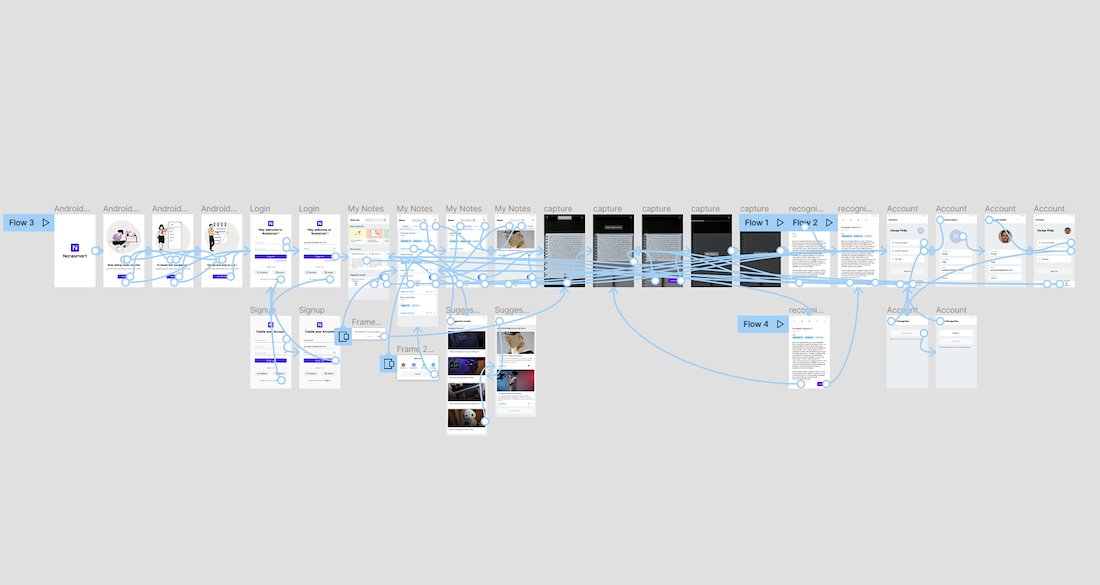Platform
Android
Role
User Research
Prototyping
Interaction Design
Visual Design
Year
2021
Covid-19 and the subsequent restrictions it brought about forced most higher educational institutions to move their classes online. This project was an attempt to understand the challenges faced by students while engaged in online classes. Design Probes, a Participatory Design tool was used to gain early insights and inspiration from users for developing the project. Subsequently, a mobile app was designed that aids in digitizing handwritten notes.

Problem Statement
What are the main concerns or pain points of users while attending online classes?
How can the overall experience of attending online classes be improved?
Goals
The primary objective of this project was to find a solution to improve the user’s experience of attending online classes or lessons.
One of my personal goal’s was to try and understand the genesis of a design solution while emphasizing user-centred and participatory design principles.
Users
The user group identified for this project were students enrolled in a higher education institution taking online classes. Although the final product could have a wider user group due to the nature of the application.
Scope and constraints
The project is academic and I had about 3 months to research, ideate, prototype and test the final product. Due to the ongoing pandemic situation, most of the user research and testing was conducted online.
Process
I followed a user-centred design approach and started with user research to gain a better understanding of the users and their context. I used Design probes as the primary tool for user research. This was followed by ideation and further discussions with users which was then followed by prototyping and iterations based on user feedback and comments.
Design Probes
I used Design Probes a participatory design tool to gather inspiration and insights into the user’s life. This served as my primary user research methodology. I found probes to be a non-invasive approach to collect data from users as opposed to interviews or surveys and also had an element of playfulness to them. The probes consisted of 5 postcards with a task for each day of the week and often required the participants to sketch their responses. A set of 5 Design probes were sent to 5 participants and were given a week to complete the tasks. These were then returned and analysed.
Insights from analysing probes
After the probes were returned I analysed them for themes and design inspiration and found that most participants were unhappy, frustrated and often bored of attending classes online. They often wished for a change of scenery at least virtually and suggested the inclusion of immersive technologies to make things interesting. Apart from that user’s also felt a lack of interaction with peers and felt the need to include social media like features within learning platforms.
Mind mapping
The next step for me was to create a mind map to help organise the various ideas and concepts. Mind mapping was a useful visual way to bring clarity and link ideas together.

Mind mapping of ideas

Persona – Michael
Age demographic: 20-26
After analysing the design probes and talking with users, I proceeded to create a persona to better understand and empathize with the user. Michael is a student pursuing a Master’s program at a university in Limerick. He stays at a student accommodation sharing the apartment with 5 other students. He is usually in front of his laptop from morning till evening attending lectures or doing group assignments remotely. Although he takes notes during lectures, he has to often go back and digitize them for assignments. Michael wants to digitize his notes easily and organize them as well.
Ideating the solution
I proceeded to ideate and started sketching possible solutions based on the data from probes. At this stage, I also went back to three of the participants and had an informal discussion of design ideas. After discussing some of the design ideas with users, I found note-taking was a common activity and that it was mostly done manually. Most users preferred taking down notes on paper but had to go back and digitize them manually for reports or tests. To bridge this gap I decided to create an app that would help with digitizing notes based on text recognition.

Sketches of initial ideas
Information Architecture
I worked on the Information Architecture to understand the basic flow and interactions of a user and also to define the main pages within the app.

Wireframe sketch and Information Architecture
Wireframing
I sketched the basic wireframes after creating the user flow diagram and proceeded to Figma to create digital wireframes to be tested with users.

Wireframe screens
Visual identity
At this point, I decided to design a logo that would also become the app icon. I also decided on the colour palette and typography for the app and kept the design minimal and simple. It was important to have a visual identity and colour palette as it helps with improving the overall visual aesthetic. I also decided to refer Google Material design system for visual design specifications, sizes and typography.

Prototyping and user testing
The wireframes were then converted to a hi-fidelity prototype after feedback from users. The high fidelity prototype was tested with users for usability issues. The testing was carried out as a walkthrough of the Figma prototype over MS Teams and the participants were encouraged to discuss and comment about the prototype. The feedback from users helped in redesigning the capture feature and also the bottom navigation tab for better usability.
High fidelity prototype demo
Outcomes and lessons learnt
Some of the key takeaways for me from undertaking this project are:
1. Early design exploration through participatory design tools can be an alternative starting point to surveys or more structured forms of enquiry.
2. Involving users early on in the design process helps with creating a product that is more aligned to what the user would eventually use.
3. The design probes took several iterations to develop and the data could not be directly interpreted. Nevertheless, they opened up discussions with participants and generated several different design pathways.
4. The time constraints during the project meant that I could not explore a lot of the design pathways generated. I had to focus on solutions that applied to most participants.
5. Participatory Design can often lead to rich discussions with users and possibly have exciting design outcomes.
